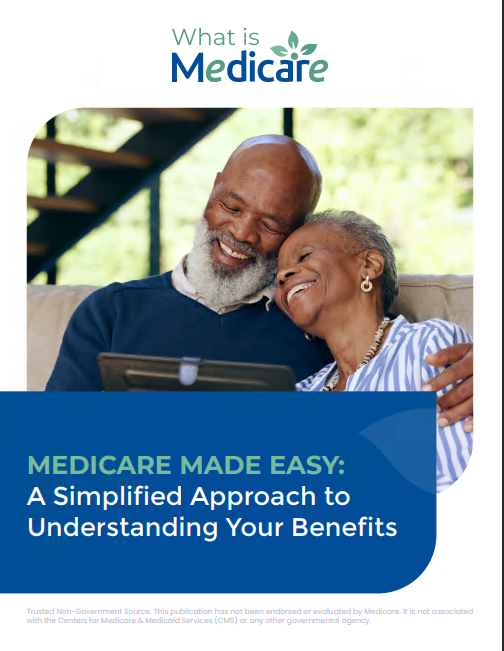Key Takeaways:
-
Medicare Part A forms the foundation of your healthcare coverage, ensuring hospital-related expenses are managed effectively.
-
Understanding how Part A integrates with other healthcare options can help you craft a comprehensive and cost-effective plan.
The Basics of Medicare Part A
Medicare Part A, often referred to as Hospital Insurance, is a key component of the broader Medicare program. It primarily covers inpatient hospital care, skilled nursing facility care, hospice services, and some home health services. Most people become eligible for Part A at age 65, or earlier if they qualify due to specific disabilities or conditions. If you or your spouse worked and paid Medicare taxes for at least 10 years, you likely don’t pay a premium for Part A.
But how does Part A work in your overall healthcare strategy? Let’s dive into its role and how it fits with other Medicare parts and supplementary coverage options.
When and How to Enroll
You’re automatically enrolled in Medicare Part A if you’re already receiving Social Security or Railroad Retirement Board benefits when you turn 65. If you’re not automatically enrolled, you’ll need to sign up during your Initial Enrollment Period (IEP), which spans seven months—starting three months before the month you turn 65, your birthday month, and ending three months after.
Missing this window could mean waiting for the General Enrollment Period (January 1 to March 31) to sign up, and coverage won’t begin until July 1. Late enrollment might also mean paying a penalty, so timing is crucial.
What Medicare Part A Covers
Hospital Stays
Part A covers inpatient care in a hospital. This includes semi-private rooms, meals, nursing care, and necessary medications. You’ll pay a deductible per benefit period, which begins when you’re admitted and ends after 60 consecutive days without inpatient care. For 2025, this deductible is $1,676.
Skilled Nursing Facility Care
After a qualifying hospital stay of at least three days, Part A covers skilled nursing care for recovery. Coverage includes room, meals, and rehabilitation services, but it doesn’t extend to long-term custodial care.
Hospice Care
If you’re terminally ill and choose hospice care, Part A ensures you receive comfort-focused treatment, including pain relief and support for you and your family.
Home Health Services
Under specific conditions, Part A covers limited home health services, such as part-time skilled nursing care, therapy, and medical social services.
How Part A Fits with Part B
While Part A takes care of hospital-related costs, Medicare Part B addresses outpatient care, preventive services, and doctor visits. Together, Parts A and B form what’s known as Original Medicare. However, Original Medicare doesn’t cover everything, such as prescription drugs, vision, dental, or hearing services. This is where additional coverage options come into play.
Supplementing Medicare Part A
Medicare Part C (Medicare Advantage)
If you prefer an all-in-one plan, Medicare Advantage combines Part A and Part B benefits and often includes extra services like prescription drugs or routine vision care. These plans are offered by private insurers and may have different costs and rules.
Medicare Part D
To cover prescription drugs, you’ll need a separate Part D plan unless you have a Medicare Advantage plan that includes drug coverage. Part D plans are crucial for managing ongoing medication costs.
Medigap (Medicare Supplement Insurance)
Medigap plans help cover the out-of-pocket costs Original Medicare doesn’t, such as deductibles and coinsurance. These plans only work with Original Medicare, not Medicare Advantage.
Understanding Costs
Even if you qualify for premium-free Part A, other costs like deductibles and coinsurance still apply. For example:
-
After your deductible, you pay $419 per day for hospital stays lasting 61-90 days and $838 per day for lifetime reserve days.
-
Skilled nursing facility care is fully covered for the first 20 days. From days 21 to 100, you pay $209.50 per day.
Knowing these costs helps you plan for potential expenses and decide whether additional coverage, like Medigap, is worth it.
Coordinating Part A with Employer or Retiree Insurance
If you’re still working or have retiree health benefits, Medicare Part A may work alongside your existing insurance. Generally:
-
If your employer has fewer than 20 employees, Medicare is your primary coverage.
-
If your employer has 20 or more employees, your employer plan pays first, and Medicare is secondary.
Discuss your options with your benefits administrator to ensure you’re making the most of both coverages.
How Part A Supports Long-Term Healthcare Goals
Emergency Preparedness
Unexpected hospital stays can be financially draining. Part A acts as a safety net, reducing the burden of unforeseen medical bills.
Chronic Conditions Management
For those with ongoing health needs, having Part A ensures access to necessary hospital services when conditions worsen, complementing outpatient care under Part B.
End-of-Life Care
Hospice benefits under Part A prioritize comfort and dignity, providing peace of mind for you and your loved ones during challenging times.
Key Considerations for a Comprehensive Plan
To maximize the benefits of Medicare Part A:
-
Review Annual Changes: Medicare updates its costs and coverage annually. Stay informed to avoid surprises.
-
Consider Additional Coverage: Evaluate how Part D, Medigap, or Medicare Advantage can fill gaps in your healthcare needs.
-
Plan for the Long Term: Think about potential future needs, like extended hospital stays or skilled nursing care.
-
Budget for Costs: Even with premium-free Part A, prepare for deductibles, coinsurance, and any uncovered services.
Crafting a Holistic Healthcare Strategy
Medicare Part A is just one piece of your healthcare puzzle. Combining it with other Medicare parts, supplemental insurance, and possibly employer or retiree benefits creates a well-rounded plan. Consider factors like your current health, anticipated medical needs, and financial situation to determine what coverage works best for you.
Preparing for a Secure Healthcare Future
Planning ahead is the key to minimizing stress and maximizing benefits. Whether you’re just enrolling or reviewing your current Medicare setup, understanding how Part A fits into the bigger picture empowers you to make informed decisions that support your overall well-being.










